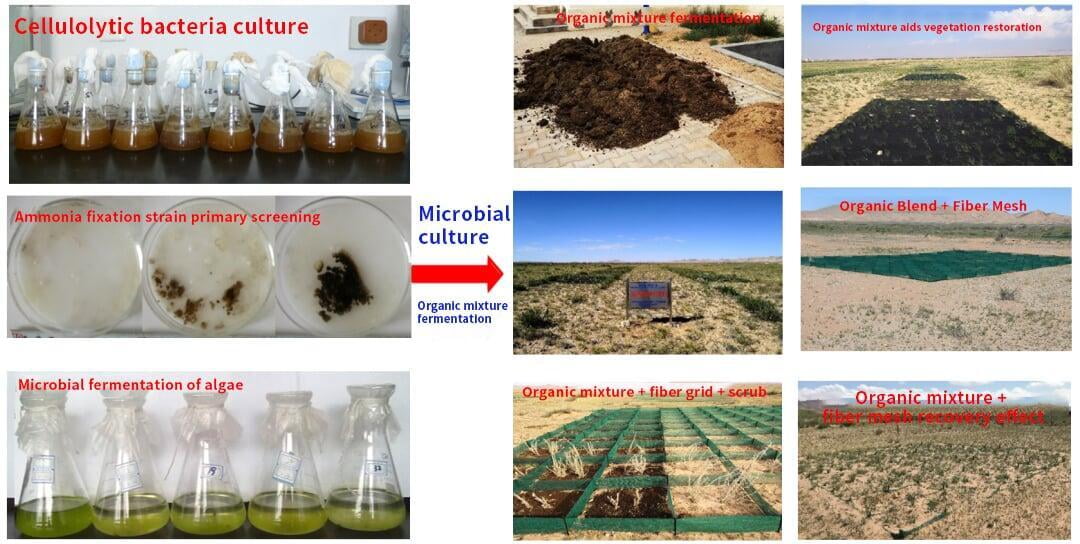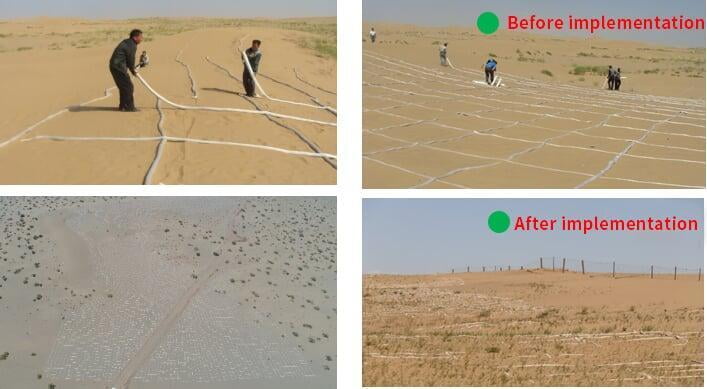Chaogwendur Town (Saiwusu Town), Ullat Back Banner, Bayannur City, Inner Mongolia, China, researchers target the problems of severe wind erosion, poor soil and slow recovery of plants on the exposed traumatic surface of degraded grassland. A rapid restoration technology of degraded vegetation with microbial organic mixture induced crust production was developed, which uses nitrogen-fixing bacteria and cellulose-degrading microorganisms to ferment with straw to produce organic mixtures. Spraying this mixture in the vegetation restoration area induced the formation of soil crusts, which allowed the settlement of sand-fixing plant species on the bare traumatic surfaces of degraded grassland, thus achieving rapid restoration of degraded ecosystems (Figure 1).

Figure 1. Rapid restoration technology of degraded vegetation with microbial organic mixture induced crust production
This new technology comes from the "Desertification Degradation Grassland Management Technology and Demonstration" project of China's National Key Research and Development Program, which is one of the many innovations achieved since its implementation.
In response to the problem of sparse vegetation on the exposed surfaces of severely sandy grasslands and the inability of plant seeds to be fixed, the project developed a "hybrid technology of mechanical sand barriers and biological sand fixation with new materials for rapid treatment of severely sandy grasslands". This technology uses long sand bags made of low-cost, easy-to-use bio-based biodegradable polylactic acid material, set up as a grid-type mechanical sand barrier, combined with the seed dispersal technology of Artemisia annua plant inside the sand barrier, solving the problem of seed fixation on drifting sand, which can be used for rapid restoration of severely sandy grassland (Figure 2).

Figure 2. Hybrid technology of new material mechanical sand barrier and biological sand fixation

